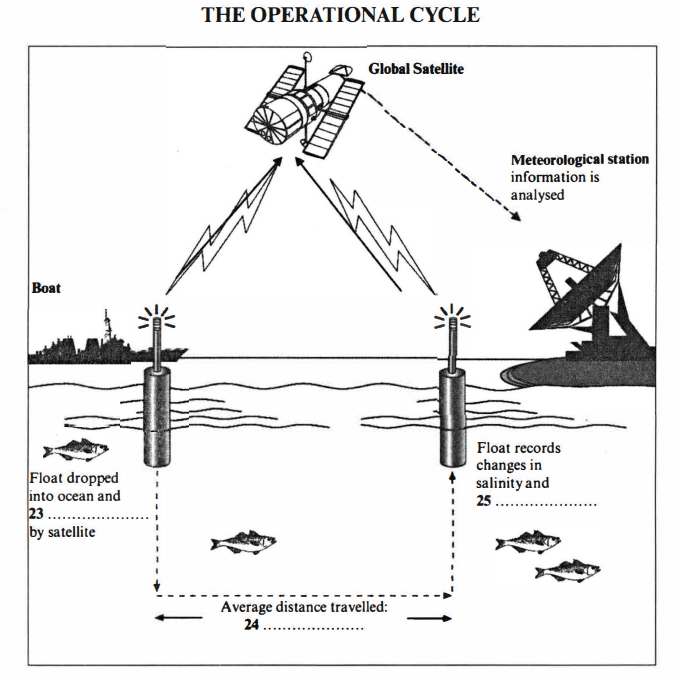SIMON: Thanks to all of you for coming along today to hear about how the robotic float project is helping with ocean research.
西蒙:欢迎大家的到来,今天要讲的内容是机器人浮舟计划如何帮助海洋研究。
Well, first of all we'll look at what a robotic float does and its use.
首先我们来了解一下机器人浮舟是什么,以及它有什么用途。
So let's start with the device itself.
我们先来看看这个装置。
It looks a bit like a cigar and it's about one and a half metres long.
它长得像一支雪茄,大概1.5米长。
More importantly it's full of equipment that's designed to collect data.
它上面携带很多设备用来收集数据。
So, it can help us in building up a profile of different factors which work together within the world's oceans.
因此它能够被用来建立数据档案,用来在全球范围内记录海洋中互相影响的各种重要参数。
STUDENT I: Sounds like a big project—isn't it too big for one country to undertake?
学生1:这个工程听起来好大啊——一个国家应该力量不够吧?
SIMON: That's quite true but this project is a really good example of international co-operation.
西蒙:工程是很大,不过这个项目充分体现了国际合作。
Over the last five years scientists from thirteen countries have been taking part in the project and launching floats in their area of ocean control.
在过去的5年中,来自13个国家的科学家们参与了这个项目的开发,并且在他们自己所在国家的海域放置了浮舟。
And next year this number will rise to fourteen when Indonesia joins the project.
到明年,随着印度尼西亚的加入,参与国数量会增加到14个。
STUDENT 2: That's impressive.
学生2:这太棒了!
SIMON: But let's move onto how floats work.
西蒙:好的,接下来我们来看浮舟的工作原理。
SIMON: The operational cycle goes like this.
西蒙:它的工作流程是这样的:
Each of the floats is dropped in the ocean from a boat at a set point and activated from a satellite.
每一艘浮舟都会在特定海域被投放在海水中,并且通过卫星激活。
Then the float immediately sinks about 2,000 metres ... that's two whole kilometres down in the water.
然后浮舟会立即下潜2000米……水下整整2公里。
It stays at this depth for about 10 days and is carried around by the currents which operate in the ocean at this level.
它会在这个深度停留10天,并且随着洋流漂移。
During this time it's possible for it to cover quite large distances but the average is fifty kilometres.
在这段时间内它有可能会随洋流漂移很长的距离,平均在50公里左右。
STUDENT 2: So what is it actually recording?
学生2:那它到底记录些什么呢?
SIMON: Well at this stage nothing, but as it rises to the surface it collects all sorts of data, most importantly variations in salinity, that's salt levels, and the changes in temperature, a bit like underwater weather balloons.
西蒙:在这个阶段它什么也不记录,但在它上浮的过程中它会记录各种数据,最重要的是盐度变化,也就是海水中盐的含量;然后还有温度变化,它就像是个海底的气象气球。
Then when it gets back to the surface all the data it's collected is beamed up to the satellite.
等到它回到水面,所有收集的数据会发送到卫星上。
After about five hours on the surface the float automatically sinks, beginning the whole process again.
在水面上停留5个小时之后浮舟又会自动下沉,开始下一个工作循环。
STUDENT I: What happens to the data?
学生1:这些数据我们用来做什么呢?
SIMON: Well the information is transferred direct to onshore meteorological stations ... like our one in Hobart ... and within four hours the findings can be on computers and they can be mapped and analysed.
西蒙:这些信息会被直接传给岸上的气象站……比如我们在霍巴特的气象站……大概四小时后所有的数据就能呈现在计算机上用作绘图和分析。
下一题
剑7 undefined
